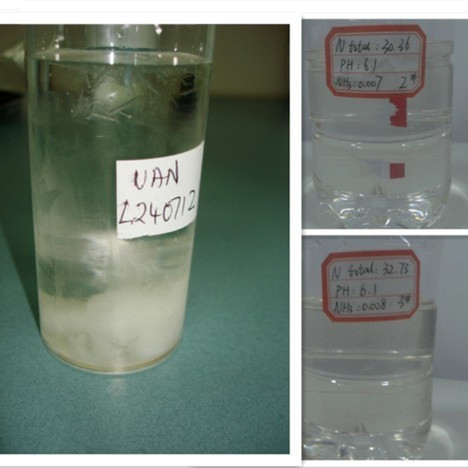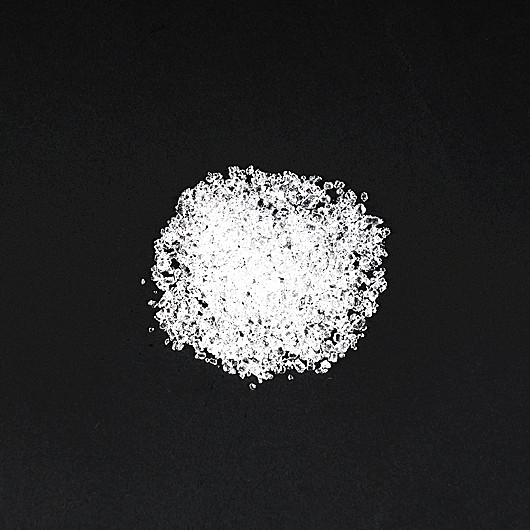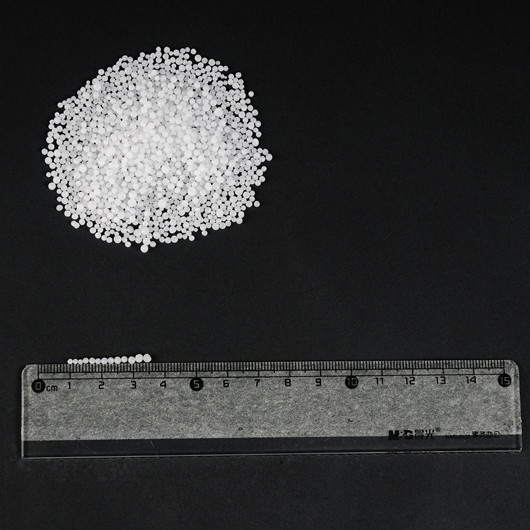Soil Fertility Improvement
One of the primary applications of CPAN in agriculture is its use as a nitrogen-rich fertilizer. CPAN provides a readily available source of nitrogen, a crucial element for plant growth. Farmers incorporate CPAN into the soil to replenish nitrogen levels, promoting healthy plant development and improving overall soil fertility.
Chemical Pure Ammonium Nitrate (CPAN) plays a vital role in enhancing soil fertility, primarily owing to its function as a nitrogen-rich fertilizer. Nitrogen is an essential nutrient for plant growth, and CPAN serves as a readily available source of this crucial element, contributing significantly to the improvement of overall soil health.
CPAN contains a high concentration of nitrogen in a form that is easily accessible to plants. This nitrogen enrichment is particularly beneficial for crops that have high nitrogen demands during their growth stages. When CPAN is incorporated into the soil, it serves as a rapid and effective means of replenishing nitrogen levels in the soil, ensuring that plants have an ample supply for optimal development.
The availability of nitrogen is directly correlated with plant development and overall health. Nitrogen is a key component of chlorophyll, the green pigment responsible for photosynthesis. By incorporating CPAN into the soil, farmers provide plants with the necessary nitrogen to produce chlorophyll, promoting robust photosynthesis and ultimately leading to healthier and more vigorous plant growth.
CPAN's role extends beyond nitrogen supply; it contributes to the improvement of soil fertility as a whole. Nitrogen, as a major nutrient, influences the soil's nutrient balance. The addition of CPAN helps maintain an optimal nitrogen-to-carbon ratio, fostering a fertile soil environment. This, in turn, creates favorable conditions for microbial activity and nutrient cycling, further enhancing overall soil fertility.
CPAN not only supplies nitrogen directly but also indirectly enhances the uptake of other nutrients by plants. The improved nitrogen status positively influences the plant's ability to absorb and utilize other essential nutrients, such as phosphorus and potassium. This synergistic effect contributes to a more balanced nutrient profile in the soil, promoting better nutrient utilization by crops.
Incorporating CPAN into soil management practices aligns with sustainable agriculture principles. The controlled and precise application of CPAN allows farmers to optimize nutrient use efficiency, minimizing wastage and potential environmental impacts associated with excessive fertilizer application. This strategic use of CPAN contributes to the development of sustainable farming systems.
The use of Chemical Pure Ammonium Nitrate (CPAN) in agriculture for soil fertility improvement is a multifaceted approach. By addressing nitrogen deficiencies, promoting healthy plant development, and enhancing overall soil fertility, CPAN proves to be a valuable tool for farmers striving to achieve sustainable and productive agricultural practices. As the demand for food continues to grow, the responsible application of CPAN stands as a cornerstone for meeting these challenges and ensuring the long-term health of agricultural ecosystems.
Crop-Specific Formulations
CPAN can be tailored to meet the specific nutrient requirements of different crops. By adjusting the formulation and concentration of CPAN-based fertilizers, farmers can optimize nutrient delivery to match the needs of various crops, thereby maximizing their growth potential and yield.
Chemical Pure Ammonium Nitrate (CPAN) offers a versatile solution in agriculture by allowing farmers to create crop-specific formulations of fertilizers. This flexibility enables the customization of nutrient delivery, ensuring that different crops receive the specific elements they need in concentrations that optimize growth potential and yield. Below, we delve into the details of how CPAN can be tailored for crop-specific formulations:
Different crops have varying nutrient requirements at different stages of their growth. By understanding the specific needs of each crop, farmers can formulate fertilizers with CPAN that address these requirements. For instance, some crops may require higher nitrogen levels during the vegetative stage, while others may need increased phosphorus during flowering and fruiting.
CPAN-based fertilizers can be formulated by adjusting the ratios of nitrogen to other essential nutrients such as phosphorus, potassium, and micronutrients. This allows farmers to create blends that match the precise nutrient demands of their target crops. The ability to fine-tune these ratios is crucial in optimizing the effectiveness of the fertilizer for specific growth stages.
CPAN's solubility and versatility make it suitable for precision farming practices. Farmers can tailor the concentration of CPAN in fertilizers based on factors such as soil type, climate conditions, and the specific growth phase of the crop. Precision application ensures that nutrients are delivered where and when they are most needed, minimizing waste and environmental impact.
Crop-specific formulations with CPAN also allow for seasonal adjustments. For example, during periods of increased rainfall, nitrogen leaching may be a concern. Farmers can adjust the formulation to include stabilizers or modify application methods to mitigate nitrogen loss, ensuring that crops receive a consistent and balanced nutrient supply.
CPAN-based formulations can be integrated with other fertilizers to create comprehensive nutrient blends. This integration enables farmers to address multiple nutrient requirements simultaneously, promoting a well-rounded approach to crop nutrition. The synergistic effects of combining CPAN with other fertilizers contribute to enhanced nutrient uptake and overall crop performance.
Crop-specific formulations with CPAN benefit from ongoing monitoring and adaptation. Regular soil and plant tissue testing allow farmers to assess nutrient levels and make necessary adjustments to the fertilizer formulation. This dynamic approach ensures that crops receive the right nutrients in the right amounts throughout the growing season.
The ability to create crop-specific formulations with CPAN represents a significant advancement in precision agriculture. By tailoring nutrient delivery to match the specific requirements of different crops, farmers can maximize the efficiency of fertilization practices, optimize crop yields, and contribute to sustainable and resource-efficient agriculture. The adaptability of CPAN-based formulations positions it as a valuable tool for modern farming strategies aiming for precision, productivity, and environmental stewardship.
Controlled-Release Fertilizers
CPAN is an essential component in the development of controlled-release fertilizers. These formulations enable a gradual release of nutrients over an extended period, ensuring a sustained supply to the plants. This not only enhances nutrient utilization efficiency but also reduces the environmental impact associated with excess fertilizer runoff.
Chemical Pure Ammonium Nitrate (CPAN) takes center stage in the realm of controlled-release fertilizers, offering a revolutionary approach to nutrient delivery in agriculture. This detailed exploration unveils the intricate mechanisms and benefits associated with CPAN's role in developing controlled-release fertilizers.
Controlled-release fertilizers leverage CPAN's unique properties to regulate the gradual release of nutrients into the soil. Coating CPAN granules with materials that control solubility and diffusion allows for a sustained nutrient release over an extended period. This contrasts with conventional fertilizers, which often lead to rapid nutrient leaching or runoff.
CPAN-based controlled-release fertilizers ensure a steady and prolonged nutrient supply to plants. This gradual release aligns with the crop's growth stages, providing nutrients when needed most. This controlled timing minimizes nutrient wastage and enhances the plant's ability to absorb and utilize nutrients efficiently, resulting in optimized crop yields.
The controlled-release mechanism not only prolongs the nutrient availability but also improves nutrient utilization efficiency. By avoiding sudden spikes in nutrient concentration, CPAN-based formulations reduce the risk of nutrient imbalances and wasteful runoff. Plants can access nutrients more effectively, leading to improved growth, development, and overall health.
Excessive fertilizer runoff is a significant environmental concern. CPAN's role in controlled-release formulations addresses this issue by minimizing the release of nutrients in a concentrated form. This, in turn, reduces the risk of nutrient runoff into water bodies, mitigating environmental pollution and eutrophication.
CPAN's versatility allows for the customization of controlled-release formulations tailored to the nutrient needs of specific crops. Farmers can adjust the coating materials and release rates to match the growth patterns and nutrient requirements of different plants. This adaptability enhances the precision of nutrient delivery, optimizing crop performance.
Controlled-release fertilizers with CPAN contribute to long-term nutrient management strategies. The sustained nutrient release aligns with the entire growing season, eliminating the need for frequent reapplication. This not only reduces labor and resource costs for farmers but also fosters a more sustainable and efficient agricultural system.
By reducing nutrient runoff, CPAN-based controlled-release fertilizers align with principles of environmental stewardship. This sustainable approach to nutrient management supports the preservation of water quality, ecosystems, and biodiversity, addressing concerns associated with agricultural practices that contribute to environmental degradation.
CPAN's integral role in the development of controlled-release fertilizers signifies a paradigm shift in nutrient management practices. The precision, efficiency, and environmental sustainability offered by CPAN-based formulations make them a cornerstone in the quest for sustainable agriculture. As the agricultural industry seeks innovative solutions, controlled-release fertilizers with CPAN stand out as a promising pathway towards balancing crop productivity with environmental responsibility.
Nitrogen Stabilization
CPAN serves as an effective nitrogen stabilizer, minimizing nitrogen loss through processes such as leaching and volatilization. This helps farmers maintain a more consistent and reliable supply of nitrogen to their crops, contributing to better nutrient management practices and sustainable agriculture.
Nitrogen, a critical nutrient for plant growth, is susceptible to loss through processes like leaching and volatilization. Leaching occurs when nitrogen is washed away by water, and volatilization involves the conversion of nitrogen into gaseous forms that escape into the atmosphere. Both processes lead to a reduced availability of nitrogen for plant uptake and contribute to environmental concerns.
CPAN, with its high nitrogen content, acts as a potent stabilizing agent. When incorporated into the soil, CPAN minimizes the risk of nitrogen loss by forming stable compounds that resist leaching and volatilization. This ensures that the nitrogen remains in a more accessible form for plant roots, promoting efficient nutrient uptake.
In nitrogen stabilization, CPAN can be integrated into formulations with advanced coating technologies. These coatings provide an additional layer of protection, controlling the release of nitrogen over time and preventing rapid losses. The controlled release aligns with the crop's demand, fostering a sustained and balanced nutrient supply.
CPAN's role as a nitrogen stabilizer contributes to improved nutrient management practices. By minimizing nitrogen losses, farmers can achieve a more consistent and reliable supply of nitrogen to their crops. This reliability is crucial for maintaining optimal growth conditions throughout the crop's life cycle, resulting in enhanced yields and overall productivity.
The use of CPAN as a nitrogen stabilizer aligns with the principles of sustainable agriculture. Sustainable practices aim to optimize resource use, minimize environmental impact, and ensure long-term productivity. CPAN's contribution to nitrogen stabilization supports these goals by reducing the need for excessive nitrogen application and mitigating the associated environmental risks.
CPAN's effectiveness as a nitrogen stabilizer enhances the resilience of agricultural systems to environmental factors. Changes in weather patterns, soil conditions, and irrigation practices can impact nitrogen availability. CPAN helps maintain a stable and resilient nitrogen supply, allowing crops to withstand variations in environmental conditions and ensuring consistent growth.
Beyond environmental benefits, the use of CPAN as a nitrogen stabilizer can be cost-effective for farmers. Reduced nitrogen losses mean that farmers can achieve higher efficiency in nutrient utilization, potentially reducing the need for additional fertilizer applications. This, in turn, contributes to cost savings and increased economic sustainability.
CPAN's role as a nitrogen stabilizer emerges as a crucial aspect of modern nutrient management in agriculture. By minimizing nitrogen losses through leaching and volatilization, CPAN ensures a more reliable and consistent supply of this essential nutrient to crops. As the agricultural industry strives for sustainability, the integration of CPAN as a nitrogen stabilizer represents a significant step towards optimizing resource use, enhancing crop resilience, and fostering a more sustainable and resilient agricultural future.
Boosting Crop Resilience
The use of CPAN in agriculture goes beyond nutrient supply. CPAN has been associated with increased crop resilience to environmental stressors such as drought and disease. The nitrogen supplied by CPAN enhances the plant's ability to withstand adverse conditions, resulting in more robust and resilient crops.
Nitrogen, a fundamental component of plant proteins and chlorophyll, plays a pivotal role in various physiological processes. CPAN, as a high-nitrogen fertilizer, delivers a readily available source of this essential element. Nitrogen is not only a building block for plant tissues but also a key player in stress response mechanisms within plants.
CPAN's contribution to crop resilience becomes evident in drought-prone environments. Adequate nitrogen supply from CPAN enhances the plant's water-use efficiency, allowing it to withstand periods of water scarcity. Nitrogen aids in the regulation of stomatal conductance, reducing water loss through transpiration and enabling crops to endure drought stress more effectively.
Nitrogen, derived from CPAN, acts as a vital player in plant immune responses. Well-nourished plants exhibit improved disease resistance mechanisms. CPAN contributes to the synthesis of defense-related proteins, phytoalexins, and secondary metabolites, fortifying the plant's ability to fend off pathogens. This, in turn, contributes to reduced susceptibility to various diseases.
CPAN's impact on crop resilience extends to antioxidant activity. Nitrogen, as an essential component of antioxidants, helps neutralize reactive oxygen species (ROS) generated during stress conditions. This antioxidant defense system, fueled by CPAN-supplied nitrogen, protects plant cells from oxidative damage caused by environmental stressors.
CPAN's nitrogen supply influences the regulation of plant hormones, such as abscisic acid (ABA) and cytokinins. These hormones play a crucial role in stress signaling and adaptation. CPAN contributes to a balanced hormonal profile, enabling crops to modulate their responses to environmental stress factors and enhancing overall resilience.
The nitrogen provided by CPAN contributes to optimal chlorophyll synthesis, enhancing photosynthetic efficiency. Improved photosynthesis translates to increased energy production for the plant, even under stress conditions. This energy surplus supports the plant's metabolic processes and facilitates better adaptation to environmental challenges.
CPAN's influence on crop resilience is manifested in the overall vigor of the plants. Well-nourished crops, supported by a consistent supply of nitrogen from CPAN, exhibit robust growth, stronger root systems, and a more efficient use of available resources. This vigor enables crops to better endure and recover from environmental stress events.
The use of CPAN in agriculture extends beyond its conventional role as a nutrient provider. The nitrogen supplied by CPAN becomes a catalyst for enhancing crop resilience to environmental stressors, such as drought and disease. By fortifying plants with the essential elements they need for stress response mechanisms, CPAN emerges as a valuable tool in cultivating crops that are not just well-fed but also capable of thriving in challenging growing conditions. This holistic approach to crop management underscores the broader impact that CPAN can have on sustainable and resilient agricultural systems.
Precision Farming Practices
CPAN supports precision farming techniques by allowing farmers to precisely control and manage the application of nutrients. This not only improves resource efficiency but also reduces the environmental impact associated with excessive fertilizer use, aligning with the principles of precision agriculture.
CPAN's versatility allows for the precise customization of nutrient delivery, enabling farmers to tailor fertilization strategies according to the specific needs of crops. By adjusting the formulation and concentration of CPAN-based fertilizers, farmers can deliver nutrients with unparalleled precision, addressing variations in soil types, crop types, and growth stages.
CPAN facilitates Variable Rate Application (VRA) techniques, a key aspect of precision farming. With the ability to fine-tune nutrient concentrations, farmers can adopt site-specific application strategies. This ensures that nutrients are applied at optimal rates, responding to spatial variations in soil fertility and crop requirements across the field.
CPAN's role in controlled-release fertilizers aligns with precision farming principles. By incorporating controlled-release technologies, farmers can synchronize nutrient release with the crop's growth stages. This precision not only optimizes nutrient utilization efficiency but also reduces the need for frequent reapplication, contributing to resource conservation and economic savings.
Integration of CPAN with GPS-guided application systems further enhances precision farming practices. Farmers can leverage GPS technology to precisely navigate the field and apply CPAN-based fertilizers with accuracy. This targeted approach minimizes overlap and wastage, ensuring that nutrients are distributed where they are needed most.
CPAN supports real-time monitoring and data analytics in precision farming. Sensors and monitoring devices can provide instant feedback on soil conditions, allowing farmers to make informed decisions about nutrient application. The data-driven insights derived from CPAN-based practices empower farmers to continually optimize their fertilization strategies.
Precision farming with CPAN promotes resource efficiency by avoiding overapplication of nutrients. The ability to tailor nutrient concentrations precisely to crop requirements minimizes waste and results in cost savings for farmers. This efficient resource use is a fundamental aspect of sustainable agriculture.
By eliminating the guesswork associated with nutrient application, CPAN in precision farming reduces the environmental impact linked to excessive fertilizer use. Precision techniques ensure that nutrients are applied only where and when needed, minimizing runoff and mitigating potential water pollution issues. This aligns with environmental sustainability goals in modern agriculture.
CPAN's support for precision farming practices represents a transformative approach to nutrient management in agriculture. The precision and control afforded by CPAN empower farmers to optimize resource use, reduce environmental impact, and enhance overall efficiency in crop production. As agriculture evolves towards more sustainable and technologically advanced practices, CPAN emerges as a crucial ally in the pursuit of precision agriculture's principles, fostering a harmonious balance between productivity and environmental stewardship.
Conclusion
In conclusion, the applications of Chemical Pure Ammonium Nitrate (CPAN) in agriculture are diverse and impactful. From improving soil fertility to supporting precision farming practices, CPAN plays a crucial role in promoting sustainable and efficient agricultural systems. As the global demand for food continues to rise, the strategic use of CPAN in agriculture stands as a key element in meeting these challenges and ensuring food security for future generations.



